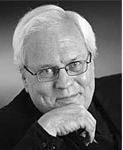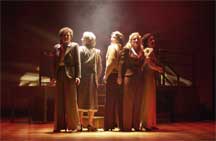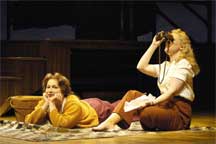Canadian Theatre Encyclopedia
Waiting for the Parade


Waiting for the Parade, a drama in 24 scenes by John Murrell , was first produced by Alberta Theatre Projects in February 4, 1977 at the Canmore Opera House in Heritage Park, Calgary. It was directed by Douglas Riske, with set by George Dexter, costumes by Jane Grose, lighting by Peter Van Johnson, featuring Sheila Junor-Moore, Marie Baron, Joan Boyd, Patricia Connor and Merrilyn Gann. It has been performed many times across the country, including at the Tarragon Theatre in Toronto in 1979, with Claire Coulter as Marta, and again at the Tarragon in 1992; at the Grand Theatre in London, directed by Robin Phillips, and filmed for TV with that cast, also directed by Phillips; and at the Shaw Festival in Niagara-on-the-Lake in 2004. It has also played in London, England, New York, and Tokyo (1997, in a translation by Toyoshi Yoshihara). In 2016, Alberta Theatre Projects again produced the play with five women of different races to celebrate its fortieth anniversary (dir. Kate Newby).

Photo by Andrée Lanthier
Shaw Festival 2004
In the play five Calgary women respond very differently to civilian life during WW II, providing a portrait of Canadian society in the 40s: Catherine’s husband is overseas, and she copes by working in a canteen and socializing with another man; Margaret has one son overseas and one who joins the communist party, and she believes that both are lost to her; Janet’s husband avoids active service by working for CBC radio, and she compensates by a display of bullying patriotism and volunteer work; Eve, a young school teacher, tries to keep her students from enlisting, and despises the militaristic posturing of her much older husband; Marta is a German immigrant, whose father is interned as a spy. As the director of the Shaw production, Linda Moore, points out in a programme note: “We discovered how the dynamics and tensions between the women were a reflection of the war itself, how the pressure of such extraordinary circumstances reveals character – how some thrive and some recoil, how some find laughter and others only worry. It comes down to getting through, to surviving. As Marta says towards the end of the play, ‘So that’s how she manages to stay alive. I wonder if it would work for me.’”
The play is episodic in structure, each scene presenting a vignette often accompanied by music. In some respects it is operatic in style, and the women are associated with the music and the dances of the 40s. The popular songs also underscore the ironies inherent in a country at war against another country from which many of its citizens, and much of its culture have originated: the “Beer Barrel Polka” is a part of North American popular culture, while the German lieder which Marta listens to is vilified.
When John Murrell was commissioned by ATP to write a Canadian history play while he was writer-in-residence from 1975 to 1977, he interviewed people who had lived through the war, and found that the stories he liked best were those of the women. They were powerful memories of waiting for news, of shifting loyalties and enmities. In his programme note for the Shaw Festival production, Murrell expresses his belief that “women are the connective tissue which allows the human race to keep faith that normal life will ultimately return. Women remind us, with wit and resilience, of the great importance of family, and also that family is not everything; of the great importance of patriotism, and also that patriotism is not everything. Their pragmatism is utterly heroic.”
Murrell also believed in the importance of retelling history back to the people who have inherited its consequences. He unearths memory and desire to revisit the past and to review the present. For Murrell, the parade of history never passes by – it is an ongoing event to which we all are witnesses, as he explained in a 1994 interview:
In every action and every response that we have, if we develop memory as a strong organ, we can bring all of our past and all of the past of all of our people, back to the race virtually, forward with us into every instant of life. We can bring all of the wisdom, passion, and perception of beauty that we’ve ever had (and even that our forebears had) forward into each instant of our lives, or at least we can get close and close to doing that, and that is what human evolution is about.
Commentary by Anne Nothof, Athabasca University
Last updated 2022-11-29

